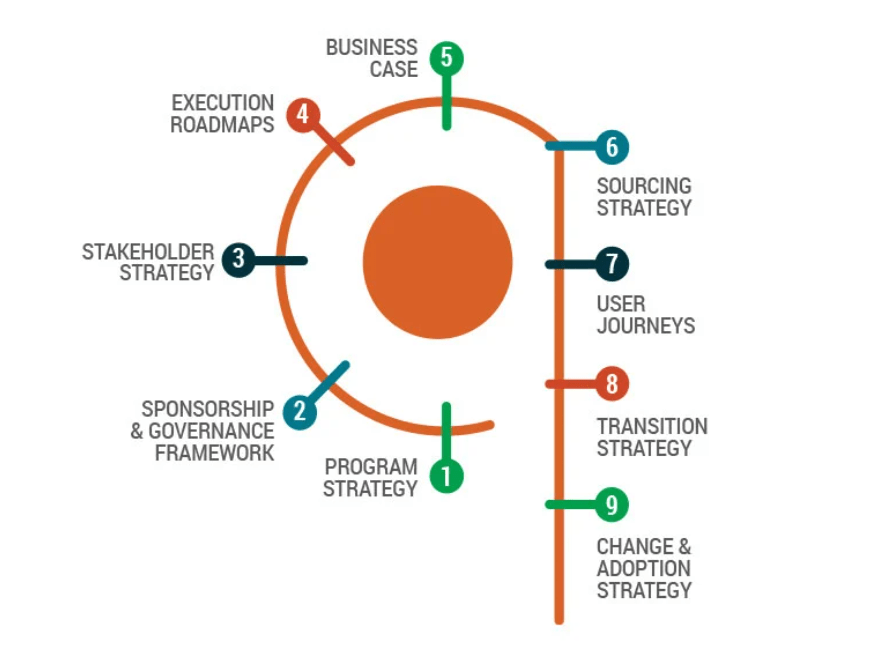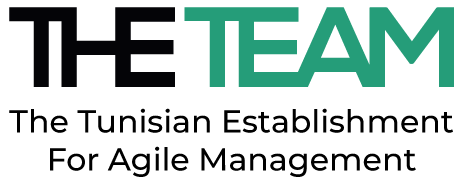9-Step Roadmap for Successful Business Transformation
Roadmap for Successful Business Transformation
The Strategy to Execution Framework® is a proven roadmap that provides the foundations and transparent pathways for business change.
Often,
The strategies and elements in the Strategy to Execution Framework are presented in a logical and natural order, but in practice, they may be applied in different sequential order and in parallel depending on the context and needs of individual organizations.
The strategy to execution process can be used in conjunction with other frameworks as needed. Most often it tends to precede other frameworks and methodologies because it forms the bridge between strategic planning and implementation and sets the foundations for a business-led change program or transformation program.
The focus of the strategy to execution process is on programs rather than projects, as programs produce a business outcome that is aligned to the strategy.

1. Program strategy
The program strategy provides the foundations for a transformation or change. It helps to determine how to solve business problems in a way that will ensure the best result.
2. Sponsorship & governance framework
The sponsorship and governance framework creates a terms of reference document that outlines the program organisation structure, roles, and responsibilities of each of the functional areas.
3. Stakeholder strategy
The purpose of the stakeholder strategy is to form partnerships with the stakeholders, with the “term partnership” referred to as establishing working and committed relationships.
4. Execution roadmaps
Execution roadmaps have value because they provide a high-level view of all the moving parts of programs in context. They also provide focus on the outcome and what is needed when and by whom.
5. Business case
A business case captures the reasoning and justification for initiating the program or project and the anticipated commercial benefits. It enables the executive to make an investment decision.
6. Sourcing strategy
A sourcing strategy guides procurement. It ensures alignment with the information, communication, and technology (ITC) strategy.
7. User journeys
User journeys are the visualization of the strategy. Their construction leverages design thinking and are part of sensemaking for stakeholders.
8. Transition strategy
A transition strategy focuses on the long-term strategy of the transformation and the future releases and generations. It helps inform the sourcing strategy and procurement of services for ongoing support and maintenance of products and services.
9. Change & adoption strategy
A change and adoption strategy focuses on adoption and the strategies for change. It is key to delineating the strategic change and activities required for the transformation and the organisation change and activities required.
Source: IIBA
To read more articles, click here.
To visit The Team’s Facebook page, click here.
